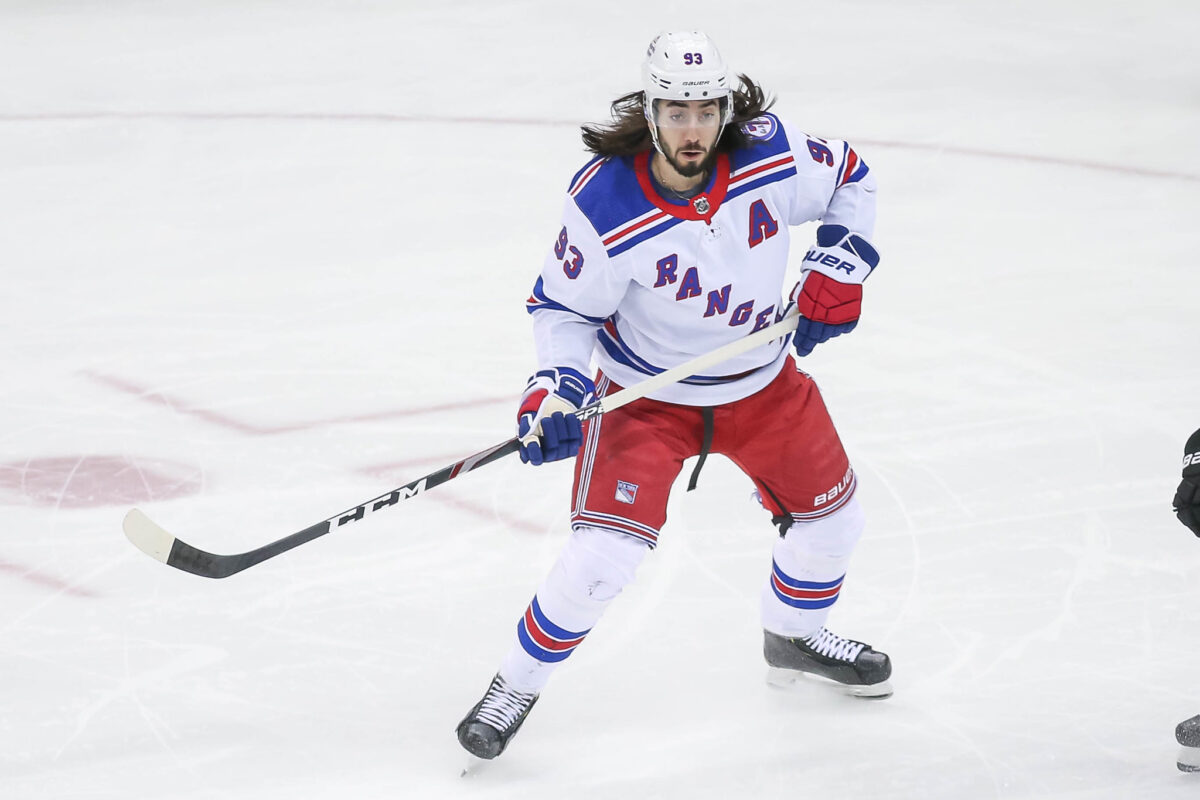General manager Chris Drury and the New York Rangers went for the marquee names this past trade deadline. First, they added Vladimir Tarasenko in a trade with the St. Louis Blues, and then, they added a first-ballot Hall of Famer in Patrick Kane in a deal with the Chicago Blackhawks. With all these new toys, the Rangers look like a team trying to score strictly highlight reel goals; that recipe has led to them dropping both of their first two games in the Kane era.
Before I dive too deep into the piece, I want to acknowledge the obvious. Yes, the Rangers have been playing shorthanded for several games now (which is their own fault), and missing Ryan Lindgren and K’Andre Miller on defense certainly hurts their chances on a nightly basis. But throwing Kane out there on the first power play unit, and forcing Mika Zibanejad, their top power play threat this season, out of his office, hurts their chances even more.
Kane played his first game with the Rangers on the second leg of a back-to-back. He had no practice time with the team, yet Gerard Gallant immediately thrust him onto the top unit. He and the other four players on the ice have looked lost out there together and have yielded one shorthanded goal while failing to generate a power play goal of their own.
During these four days off, the Rangers are likely vigorously working on the power play, but even after their brief break ends, Kane should be starting on the second power-play unit, and Tarasenko should be on the first. Here’s why.
Power Play 2 Needs Kane’s Passing and Zone Entry
Adding Kane and his vision to the second power-play unit would do wonders for its puck movement. Yes, that unit scored in Saturday’s game against the Boston Bruins, but the goal came off a simple shot and deflection, not due to crisp puck movement.
By placing Kane on the half-wall, the Rangers will be able to get the puck through the seam more often. This will lead to chances for Filip Chytil in the bumper spot, one-timers from Jacob Trouba at the point, and deflection opportunities for Alexis Lafreniere in front.
Related: Grading Rangers’ Blockbuster Trade for Patrick Kane
The forgotten man becomes Vincent Trocheck, who has a knack for finding the puck during net front scrambles and likes to live around the back post. With him as the one-time option across the seam from Kane, he can slide down toward the back post and receive the long pass, similar to how Panarin finds Zibanejad in that spot on the first unit.
The other area that Kane drastically helps the second unit is zone entries. When they get set up, the second unit, which features Lafreniere, Trouba, Trocheck, Chytil, and right now, Tarasenko, can create chances. The problem most nights, they struggle to get the puck back into the zone once it gets cleared. Kane’s skillset allows him to skate the puck into the zone and pass it off to get over the blue line.
This should help Chytil and Trocheck generate speed through the neutral zone, creating an accessible zone entry for Kane, who can either skate it in or dish it to one of the two fastest forwards on the team. If the Rangers could have two units enter the zone easily, their power play, which has been a disappointment this season, would start generating much more. And that second unit can become as dangerous as the first.
Put Zibanejad Back in His Spot on Power Play 1
The biggest thing moving Kane to the second unit does is put Zibanejad back on the left circle while the first unit is out there. He is as effective from that spot as the league’s elite power-play snipers (think Alex Ovechkin, Steven Samkos, and David Pastrnak). Moving him didn’t make sense when they first did it, and with how PP1 has looked, it makes even less sense now.
Tarasenko, who would swap places with Kane, is the perfect candidate for the bumper spot on that first unit. As a left shot, he is a redirect option for Panarin, and a one-time option for Zibanejad, should the defense overcommit to blocking his shot. Tarasenko does not need much time to get his shot off and has good puck skills, making the bumper a spot he’d thrive in.
Zibanejad is second in the NHL, with 19 power-play goals this season. Putting him back to where he is most effective is crucial to the success of the Rangers’ special teams. Kane is not the player he once was, and it deepens the talent and danger level of this team if you use him in his spot on the right wall of the second unit rather than forcing Zibanejad out of his spot on the first.

I don’t think the Rangers will continue to play as poorly as they did in the first two games since they acquired Kane. Naturally, the practice time and return of significant pieces will help that. But, the Rangers and Gallant can also help themselves. There is no need to force-feed Kane and treat him like he is the 2015-16 Hart Trophy version of himself.
Kane still has the skill, and still can play, but diminishing his role a bit opens the ice for the Rangers’ players who have gotten them to this point in the season and allows him to get comfortable with his new squad. The Rangers don’t play again until Thursday, and we shall see if they deem Kane a better fit on the second unit or if they continue to run the first unit into the ground.
